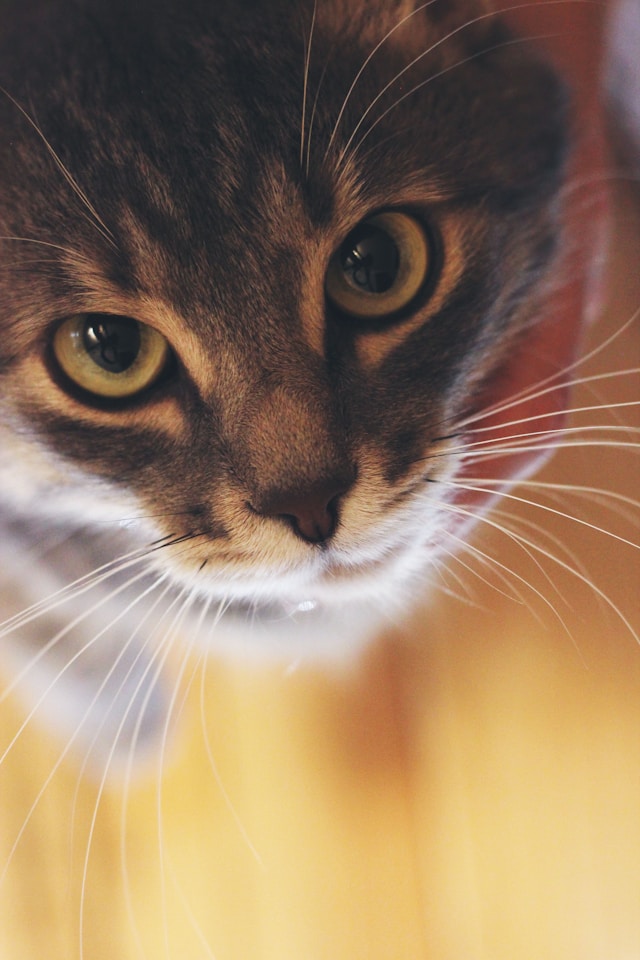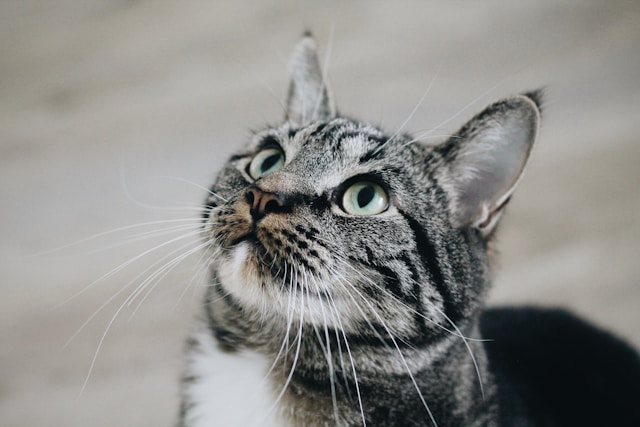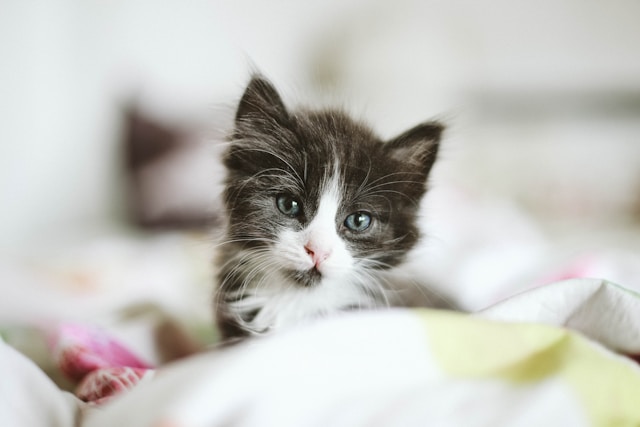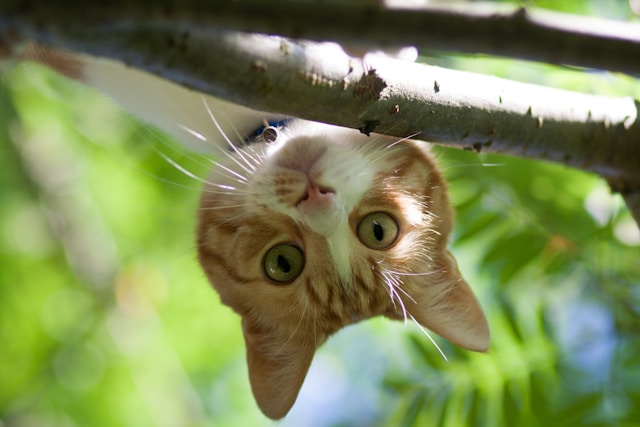Cats are captivating creatures, known for their grace, agility, and mysterious allure.

Among their many charming features, their eyes stand out as windows to their souls, revealing a world of emotions and instincts. However, beyond their aesthetic appeal, a cat’s eyes play a crucial role in their survival, communication, and overall well-being. Understanding the complexities of feline eye health is essential for every cat owner. In this detailed guide, we will explore the intricate anatomy of a cat’s eye, common eye problems that afflict felines, preventive measures, and proactive care strategies to ensure your beloved pet enjoys optimal vision and ocular health.
Anatomy of a Cat’s Eye:
To comprehend the nuances of feline eye health, it’s imperative to delve into the remarkable anatomy of a cat’s eye. While sharing similarities with human eyes, a cat’s eye possesses unique adaptations suited to its predatory nature and nocturnal habits.
1. **Iris and Pupil**: The iris, the colorful portion of the eye, regulates the size of the pupil, which is unique in cats due to its vertical orientation. This design allows for rapid dilation and constriction, enabling cats to adapt swiftly to changes in light levels, crucial for hunting and navigating in low-light conditions.
2. **Cornea and Lens**: The cornea, a transparent dome-shaped structure, covers the front of the eye, while the lens, located behind the iris, focuses incoming light onto the retina. Cats have exceptionally clear corneas and well-developed lenses, facilitating precise vision, an asset for stalking prey with precision.
3. **Retina and Tapetum Lucidum**: The retina, lining the back of the eye, contains specialized cells called photoreceptors that convert light into electrical signals, initiating the visual process.

Unique to nocturnal hunters like cats, the tapetum lucidum, a reflective layer behind the retina, enhances night vision by reflecting light back through the retina, maximizing visual sensitivity in dim light.
Common Eye Problems in Cats:
Despite their resilient nature, cats are susceptible to a myriad of ocular ailments, ranging from minor irritations to serious conditions requiring prompt veterinary intervention. Recognizing the signs of these afflictions is paramount for early detection and treatment.
1. **Conjunctivitis (Pink Eye)**: Conjunctivitis, characterized by inflammation of the conjunctiva—the thin, translucent membrane lining the eyelids and covering the sclera—manifests as redness, swelling, discharge, and squinting.
2. **Corneal Ulcers**: Corneal ulcers, often resulting from trauma, infection, or underlying ocular diseases, present as painful erosions or defects on the corneal surface, accompanied by squinting, excessive tearing, and photophobia.
3. **Uveitis**: Uveitis, inflammation of the uvea—the middle layer of the eye comprising the iris, ciliary body, and choroid—causes redness, cloudiness, pupil constriction (miosis), and ocular discomfort.
4. **Glaucoma**: Glaucoma, characterized by elevated intraocular pressure (IOP) leading to optic nerve damage and vision loss, manifests as dilated pupils, corneal cloudiness, episcleral vessel congestion, and ocular pain.
5. **Feline Herpesvirus (Feline Viral Rhinotracheitis)**: Feline herpesvirus, a common cause of ocular and upper respiratory infections in cats, results in conjunctivitis, corneal ulcers, ocular discharge, and blepharospasm.
Caring for Your Cat’s Eyes:

Maintaining optimal eye health in cats necessitates a multifaceted approach encompassing preventive measures, attentive observation, and timely veterinary care. Here are comprehensive guidelines for safeguarding your feline companion’s ocular well-being:
1. **Routine Veterinary Examinations**: Schedule regular check-ups with a veterinarian trained in ophthalmology to assess your cat’s ocular health, detect subtle abnormalities, and address emerging issues promptly.
2. **Nutrition and Dietary Supplements**: Provide a balanced, species-appropriate diet rich in essential nutrients, particularly vitamin A, taurine, omega-3 fatty acids, and antioxidants, crucial for ocular health and immune function.
3. **Environmental Enrichment**: Create a stimulating, stress-free environment enriched with interactive toys, vertical perches, scratching posts, and hiding spots to promote physical exercise, mental stimulation, and emotional well-being, reducing the risk of stress-induced ocular problems.
4. **Hygiene and Grooming**: Maintain meticulous hygiene by regularly cleaning your cat’s living environment, including litter boxes, bedding, and toys, to minimize exposure to infectious agents and irritants. Additionally, gently wipe away ocular discharge or debris using a soft, damp cloth, avoiding harsh chemicals or abrasive materials near the eyes.
5. **Parasite Prevention**: Implement a comprehensive parasite control program, including regular administration of topical or oral flea, tick, and heartworm preventatives, as well as routine deworming, to safeguard against ocular parasites such as ocular larva migrans and dirofilariasis.
6. **Eye Protection**: Shield your cat’s eyes from potential hazards, such as airborne debris, household chemicals, smoke, and ultraviolet (UV) radiation, by ensuring adequate ventilation, using pet-safe cleaning products, and minimizing exposure to direct sunlight, particularly during peak UV hours.
7. **Prompt Veterinary Consultation**: Monitor your cat’s ocular health vigilantly, promptly reporting any abnormalities or changes in appearance, behavior, or vision to your veterinarian for thorough evaluation and tailored treatment recommendations. Never attempt to self-diagnose or self-medicate without professional guidance, as improper management can exacerbate existing conditions and compromise your cat’s ocular health.

Conclusion:
In conclusion, maintaining vigilant oversight of your cat’s ocular health is paramount for preserving their vision, comfort, and quality of life. By familiarizing yourself with the intricacies of feline eye anatomy, recognizing common eye problems, and implementing proactive care strategies, you can empower yourself to be a proactive advocate for your cat’s ocular well-being. Remember, early detection, preventive measures, and timely intervention are the cornerstones of effective eye care in cats. Together, let us embark on a journey to safeguard our feline companions’ precious peepers and ensure they enjoy a lifetime of clear-sightedness and visual vitality.


